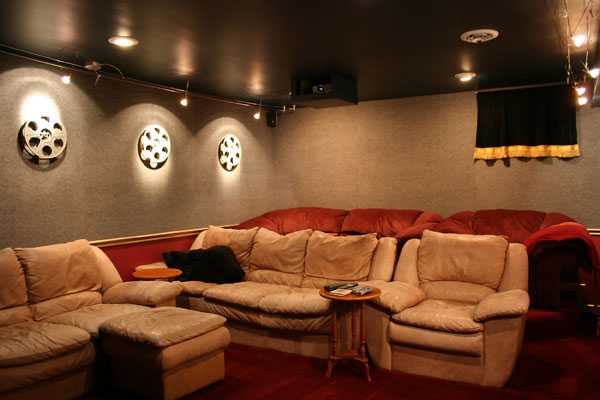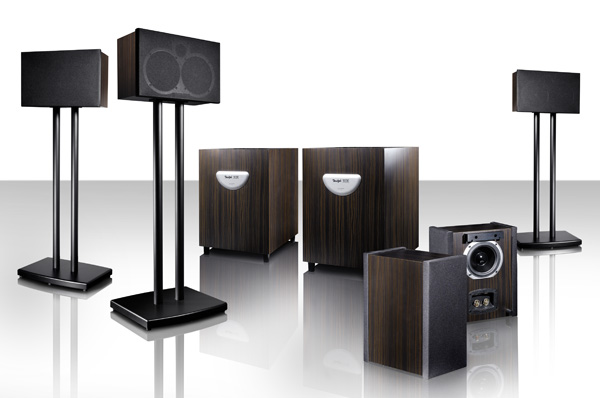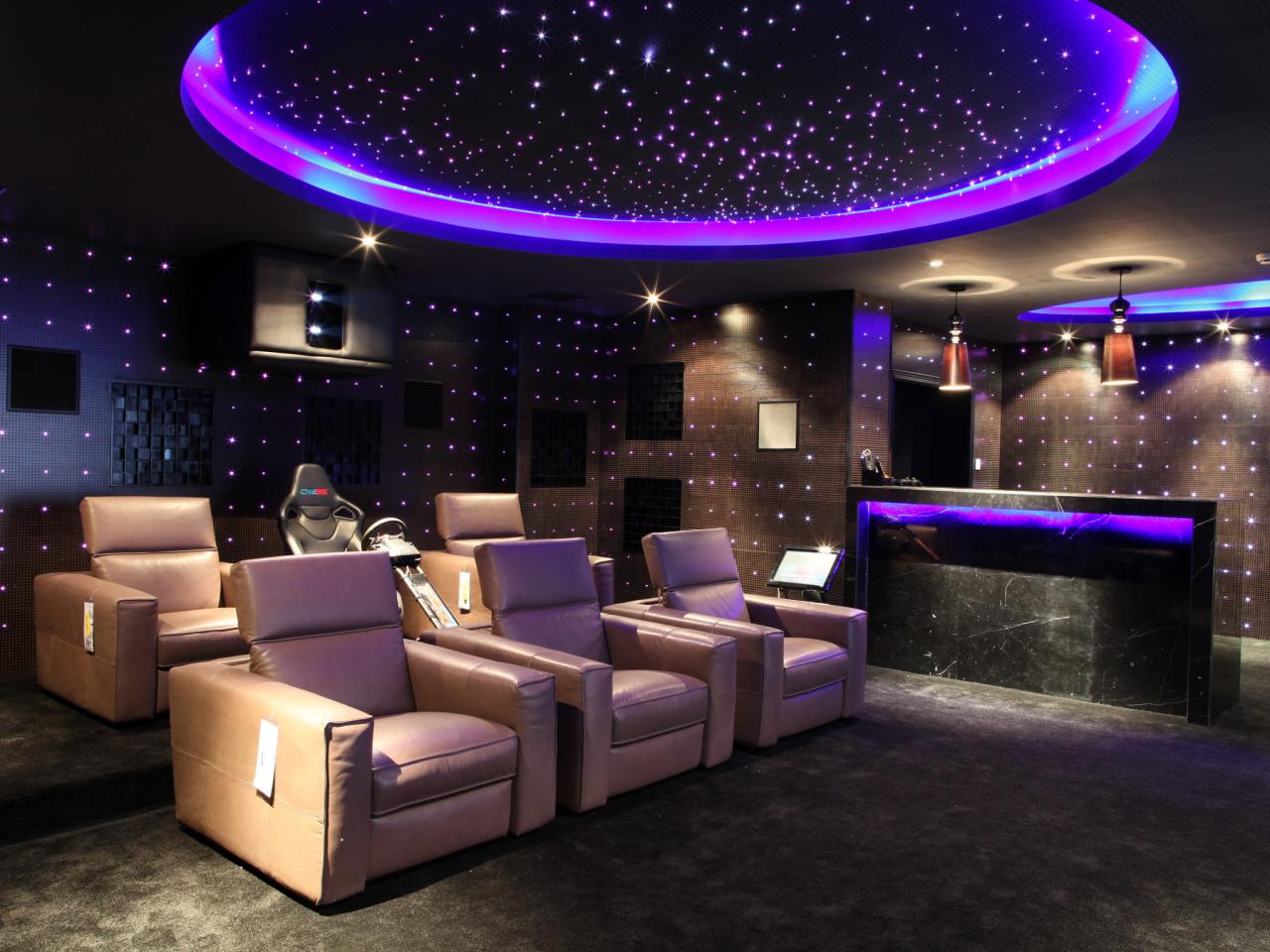Watch movies on the big screen, at home, with the perfect home cinema set up is really a great feeling. There are no hard-and-fast rules for what turns a room with a TV into a full-fledged “home theater.” At the very least it’s a bigger, better picture with bigger, better sound. But it isn’t just electronics junkies and lottery winners who are going in for home theater systems. Families who want a more engaging cinema experience — minus the overpriced popcorn — are upgrading as well, thanks to affordable options for nearly every budget.
To set up a home theater in your house, you’ll first need to prepare a room, whether it’s the basement, the attic, or the bedroom of a college-bound son or daughter
Wish to own an apartment with home theater set up?
Then you’ll need to acquire the necessary components: TV, receiver, DVD player, speakers. Finally, you’ll have to put it all together. Throughout the process, remember that in the end what’s important is not snazzy new technology or killer specs but how comfortable and enjoyable your home theater is. This is the guide you’re looking for, from layout to choosing curtains and the most important part of the set, the projector itself.
Projectors are the kind of device where you really do get what you pay for. Regardless of your budget, it will be the most expensive purchase in your home theatre system. Never purchase a projector blind – if you can’t find a demo room locally, then make sure you find high quality photographs, videos, reviews and comparisons online from sources you trust.
Most projectors will be either 720p or 1080p, with a few hundred dollars in price difference. Remember that with a big image, you’re really going to notice that difference in resolution – so if you can afford it and plan on projecting onto a large screen, you’re really going to appreciate spending a little more. Make sure you’re buying a projector that actually projects at 1080p, instead of one that just “supports 1080p” – which means the signal is downgraded to something lower.
One specification you’ll see quoted very often is the lumen value (except where it’s so low as to be shameful). Lumen is a measure of amount of light emitted by the projector; in layman’s terms, the brightness. A low lumen value – 1500 or less – will only be visible in a dark room. 3000 lumen and higher will be visible in daylight, but truthfully any projected image will look better when there’s less ambient light.
 Another key point to pay particular attention to is the life of the bulb and cost of replacement. Projectors use incredibly powerful bulbs and replacing them can cost up a third of the original price of the projector in some cases. Bulbs are rated by the number of hours they should last for; a few thousand, usually, so it should last a year to two years with moderate usage. If you’ve set up your home theatre room to be as dark as possible, you may be able to switch the projector into a lower power economy mode without too much detriment to the picture (in fact, some movie buffs say the full brightness is too blinding on some higher lumen models).
Another key point to pay particular attention to is the life of the bulb and cost of replacement. Projectors use incredibly powerful bulbs and replacing them can cost up a third of the original price of the projector in some cases. Bulbs are rated by the number of hours they should last for; a few thousand, usually, so it should last a year to two years with moderate usage. If you’ve set up your home theatre room to be as dark as possible, you may be able to switch the projector into a lower power economy mode without too much detriment to the picture (in fact, some movie buffs say the full brightness is too blinding on some higher lumen models).In addition to bulb replacements, you’ll need to clean the air filters every 3-6 month, replacing them if they’ve perished.
Finally, stay well away from any ultra-portable or LED-based projectors; they may last longer, but the image quality is horrendous and they typically have 10% of the lumen output of a bulb-based model.
A quick note on image ratios: widescreen means 16:9 ratio, great for gaming, movies and general use. Avoid older projectors that only have XGA, WXGA, and SXGA, as these are all 4:3 ratio and less than 108op resolution.
The biggest issue when planning a home theatre room is that projectors need a good throw distance, and the greater the distance you give them, the larger your screen can be. This value is fixed – projector model X at a distance of Y meters from the screen will give you an image Z inches across.
Of course, throw distances vary by manufacturer and model – once you’ve found a suitable projector, use this helpful projection calculator tool to work out how far the projector will need to be placed to get a certain size image; or inversely, the size of the projected image, when placed a certain distance away.
The projector also needs a clear line for the light to travel; any objects in the way – such as human heads or feet – will obscure the image. The best way to avoid this is to mount the projector on the ceiling. A coffee table is fine for use with ultra short throw devices or temporary use. For the best image quality, the projector needs to be placed in the center; you can project from off to one side, but the image becomes severely distorted. Just don’t do it. Do also make sure that your projector has adequate ventilation on all sides; don’t mount it inside anything, or the heat build up will severely damage the life of your the bulb. These things get really hot.
Finally, don’t forget seating. If you have cash to burn, you can spend a few thousands on professional quality cinema seats with beverage warmers, mini-fridges and all manner of nonsense. A nice sofa works fine for most people though!
Experts will tell you that projector is only half of the equation; you need an equally good screen to go with it. For the absolute best quality, the room, projector and screen all need to be matched. Experts are also trying to get you to part with as much money as possible though, so take that advice with a popcorn bucket full of salt.
If you are buying a screen, avoid high gain models (which focus the light back toward you), as they can result in hotspots of bright light in the center and bad image quality when viewing from the sides. Elite screens offer a good balance between affordability, size and quality; or you can buy special paints with a reflective coating if you’d rather use the wall but want better performance.
Not all of us can afford to spend that much money just on a decent screen or fancy paints though, and to be honest a matte white wall is going to give you a huge projection surface for a fraction of the cost. Unless you really need to project in a bright environment, you can get 95% of the image quality on a matte white wall for hundreds of dollars less than if you had bought a similar sized screen.
A home theater is nothing without surround sound – 5.1 at least, which means 2 front, 2 rear, 1 centre speaker and a subwoofer. 7.1 and 9.1 are becoming increasingly common now, too.
You can buy cabling conduit from any hardware store – these usually snap together and have an adhesive surface to stick to the wall or skirting board. Under-carpet wiring is also an option, though you need to use a tensioning device to pull the carpet back to the tack at the edge of the room.
In summary
Choose a suitable projector first; higher lumen value is better and will mean your image is visible even in bright conditions. Aim for 1080p if you can afford it – it’s an absolute must if you’re planning a large projection size. Otherwise just stay away from anything with XGA, WXGA, and SXGA resolutions, and ensure 1080p means 1080p output, and not just “compatible”.
Use the projector calculation tool to work out optimal placement, and either mount to the ceiling or plan furniture around that, making sure you won’t obstruct the projection with anything.
For best quality, purchase a screen – but the price goes up quickly for larger screens, so expect to pay big. A perfectly smooth matte white wall will produce results indistinguishable for most people at a fraction of the price.
Blackout curtains may not be essential unless you want the authentic experience. Hold off on buying these until you’ve had a chance to test out everything first.
A home theatre is an certainly investment that will repay you with great experiences for years to come, dramatically enhancing your enjoyment of movies, TV and gaming. At the very least, buy yourself a projector!
 94970 12000
94970 12000






Recent Comments